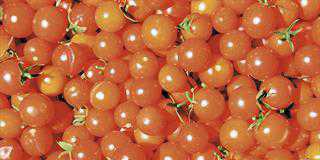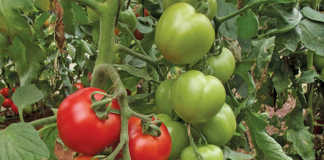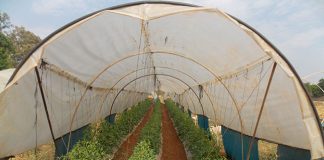
Photo: Bill Kerr
Not all clay soils are equal. There are different classes of clay. Some clays swell and shrink greatly on becoming wet and dry and others are just ‘dead’. The latter is used for making pottery, the former for growing plants. We’ll be discussing the former.
In contrast to sandy soils, clay soils are generally very fertile. The platelets (tiny fragments) that make up the soil hold minerals and water. Calcium is not leached and consequently the soil seldom becomes acidic.
READ: How to fertilise a crop correctly
Clay soils can have great potential when worked correctly and planted to suitable crops. There are three main clay types in our soils, each with different qualities.
Montmorillonite-smectite expands and contracts the most, while kaolinite is the hard, dead clay.
Various combinations of these provide different qualities to the soil. Montmorillonite is the best as it contributes movement to the soil, which is almost like self-cultivation. A hard clod becomes soft and crumbly after wetting and drying.
It forgives bad cultivation practices, but is difficult to work with, as all clays are. Some of the particles in clay are smaller than many bacteria. Montmorillonite may contain up to 60 different minerals.
It is worthwhile learning to work with clay soil to exploit this warehouse of nutrition. You get a small window of opportunity to plough clay soil. When it is dry, you can’t get an implement into it.
When wet, it is very sticky and unmanageable. As it retains so much moisture, you get few opportunities to cultivate it in the rainy season.
In working clay soil in the past, I usually had to wait for the right stage in early winter. A very strong tractor is needed to cultivate clay soil, so it’s a lot more profitable and convenient to adopt a minimum till approach.
Start by determining what fertiliser is required to get the soil in balance. Your local fertiliser rep can advise in this regard.
After the fertiliser has been applied, plough or rip the land and form beds that can remain intact for the future. Only the surface of the beds needs to be cultivated, making life a lot easier. Tillage becomes a lot cheaper and preparation for the next crop can be done as and when necessary.
The crop choice is important with clay soil to eliminate too much digging and, in some cases, washing. Suitable vegetables are beetroot and Swiss chard. Beetroot develops a very attractive colour in black clay soil.
Grow carrots in many of the more ‘lively’ or ‘looser’ clays, but removing and cleaning them can be a big job. Avoid potatoes due to the mechanical work and the washing required.
Onions are suitable for most clay soils, while grain crops are also no problem. As clay soils hold much more water than other soil types, they need a lot more irrigation to wet to the same depth as in sand.
Once wet, clay retains water for longer. With minimum till, the roots of past crops will decay, leaving channels in the soil and, by not ploughing, the soil’s natural structure will develop.
Prolonged heavy rain can saturate the soil so much that crop roots die from lack of oxygen. The lack of air in the soil can also cause nitrogen loss to the air as aerobic organisms ‘steal’ the oxygen molecules from the nitrogen.
Channels from decomposed roots will in time reduce this danger, another good reason for minimum till with clay soil.
Reviving dead clay
Some of the ‘dead’ types of clay soil can be improved by adding a lot of organic matter when the soil is in a state when it can be worked.
Thereafter minimum till can help. Crops such as maize and sorghum with their extensive root systems will also help improve matters. Clay soil is occasionally hard, dead and poorly aerated. The best option is a permanent pasture that suits the climate and the farmer’s requirements.













